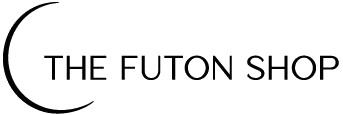
As we delve into the world of vegan leather and explore sustainable alternatives in the leather industry, one material stands out for its unique qualities and eco-friendly characteristics – Cork Leather. With attributes ranging from being lightweight and waterproof to biodegradable and cruelty-free, Cork Leather offers a compelling choice for environmentally conscious consumers.
Not only does it challenge traditional leather norms by providing a durable and aesthetically pleasing alternative, but it also positions itself as a leader in both the furniture and fashion industries. In an era of heightened concern for the planet's well-being, embracing eco-friendly options becomes crucial. Cork Leather steps into this space, allowing us to make conscious decisions without compromising on style or quality. So, why not make a conscious choice today?
-Environmental Impact
-Introducing Cork Leather
-Traditional Leather Vs. Cork Leather: A Comparative Analysis
-Alternative to Traditional Leather:
-What is Cork Fabric?
-What is Cork:
-Cork Production
Environmental Impact:

SUSTAINABLE

Eco Friendly

Sustainable
Fashion Industry

WATERPROOF

Cozy Comfort

Hypoallergenic
Sustainable Source
- Cork leather is sustainably derived from the bark of cork oak trees, harvested every 9-12 years without harming the tree. This eco-friendly approach provides a renewable alternative to traditional leather, known for its harmful chemicals and practices.
Environmentally Conscious Production
- Cork leather stands out as environmentally friendly, requiring minimal energy and water in its production compared to traditional leather or synthetic materials and fabrics. Its production process is devoid of toxic chemical emissions, ensuring a safer choice for both the environment and workers.
Fashionable and Sustainable
- Embraced by the fashion industry, cork leather offers a stylish and sustainable option for creating bags, shoes, and accessories. Its unique texture and appearance have contributed to its growing popularity.
Waterproof Durability
- Noteworthy for its practicality, cork leather is inherently waterproof, making it ideal for products exposed to water or moisture. Unlike traditional leather, it remains durable and unaffected even with prolonged water exposure.
Luxurious Comfort
- Beyond its sustainability, natural cork leather provides a soft and cozy feel, ensuring comfort in various products. With insulating properties, it keeps you warm in colder weather and remains breathable in warmer temperatures..
Hypoallergenic Appeal
- Particularly suitable for those with sensitive skin or allergies, cork leather is naturally hypoallergenic. Free from harsh chemicals and dyes that may irritate the skin, it stands as a safe and comfortable choice for everyone.
Traditional Leather vs. Cork Leather:
A Comparative Analysis
1. Production Process
Traditional Leather:
Derived from tanned hides of animals skins and animal products like cows, goats, and sheep, traditional leather involves treating hides with chemicals for preservation and softening.
Cork Leather:
Crafted from the bark of cork oak trees, harvested every 9-12 years without harming the tree. Tree bark, Cork leather stands out as sustainable materials and eco-friendly alternative.


2. Durability
Traditional Leather:
Celebrated for its enduring quality, traditional leather sofas and furniture are known to withstand wear and tear over time, ensuring longevity and continued comfort.
Cork Leather:
Impressively durable, cork leather sofas and furniture match or even exceed the resilience of traditional leather. With resistance to scratches and water damage, they prove to be an excellent choice for those seeking both durability and sustainability in their home furnishings.
3. Sustainability
Traditional Leather:
Producing traditional leather contributes to deforestation and involves the use of harmful chemicals during the tanning process.
Cork Leather:
Cork leather emerges as a sustainable alternative with natural materials, as the harvesting process of cork oak trees does not harm them, ensuring continuous bark production over many years.


4. Versatility
Traditional Leather:
Long-established in fashion and accessories, traditional leather offers versatility in terms of color and texture options.
Cork Leather:
Advancements in technology have expanded the color and texture options for cork leather. It has gained popularity in various products such as wallets, belts, and even furniture.
5. Comfort
Traditional Leather:
Traditional leather may require a breaking-in period, as it can be initially stiff and uncomfortable.
Cork Leather:
Cork leather tends to be softer and more pliable from the start due to its natural elasticity. This makes it a comfortable option without sacrificing style.
In this comprehensive comparison, cork leather emerges as a compelling alternative to traditional leather, offering sustainability, durability, and versatility without compromising on comfort.

What is Cork Fabric?
In the vast tapestry of human history, cork has quietly played a crucial role for over five millennia, sealing containers, fashioning sandals, and enhancing fishing gear. From ancient civilizations to the modern winemaking industry, cork has left an indelible mark on various aspects of human life. This blog delves into the intriguing narrative of cork and its evolution, focusing on a contemporary twist — the rise of cork leather.
The story begins in the first century B.C.E., where a well-preserved amphora in Ephesus bore witness to the remarkable sealing capabilities of cork. Millennia unfolded, witnessing the Greeks crafting cork sandals and the Chinese and Babylonians incorporating cork into their fishing tools. Portugal, recognizing the ecological significance, enacted protective laws for its cork forests as early as 1209. However, it wasn't until the 18th century, amidst the burgeoning wine industry, that large-scale cork production truly took root and flourished.
As the wine industry expanded, so did the demand for cork stoppers, a trend that persisted until the late 20th century. Yet, the onset of concerns surrounding "corked" wine prompted a transformative shift. Australian wine producers spearheaded the adoption of synthetic corks and screw caps to address quality issues.
By 2010, New Zealand and Australia had largely embraced screw caps, triggering a global trend with European and American wineries following suit for cost-effective production. This shift jeopardized thousands of hectares of cork forests, raising questions about the future of this sustainable resource.
However, a positive turn of events emerged with renewed interest in genuine wine corks and the emergence of cork leather. This innovative material, a vegan leather alternative to traditional leather, not only embodies sustainability but also offers a high-quality and versatile option for conscientious consumers. The narrative of cork unfolds not merely as a historical account but as a dynamic tale of adaptation, resilience, and a renewed appreciation for eco-friendly alternatives.
Join us on this exploration into the origins, history, and the contemporary resurgence of cork, as we unravel the unique story of cork leather — a material that bridges the ancient wisdom of cork with the modern ethos of sustainability.
Cork, an essential material with a history spanning over five millennia, undergoes a meticulous harvesting process in Portugal, its primary global source. Contrary to common belief, this process doesn't involve felling trees; artisans carefully cut and peel bark, allowing trees to flourish for up to two centuries.
The initial cork harvest at 25 years serves non-wine industries, with subsequent harvests enhancing cork's suitability for wine closures, a process taking about 40 years. Southern Portugal reveals a manual, familial tradition of cork harvesting, showcasing deep respect for the industry.
Post-harvest, cork bark undergoes seasoning, boiling, and cutting into strips. Skilled workers punch out, grade, and rigorously quality-check cork to ensure freedom from taint, notably cork taint (TCA).
Beyond Portugal, corks reach global purveyors, undergoing individual and batch soaks, precise measurements, and stringent grading. The final approved corks, originating from Portuguese forests, become an integral part of wineries worldwide. While eradicating taint from every cork is challenging, extensive measures ensure wine meets the intended flavor profile. Cork, chosen for controlled oxygen permeability, aging capabilities, and sustainability, is a vital part of winemaking, representing a story of craftsmanship and a connection to cork's centuries-old tradition.

Cork production
Crafting cork fabric is intricately linked to the natural growth cycle of cork oak trees, a journey spanning a minimum of 9 years for the cork layer to reach maturity. Following spring cork extraction, the oak develops a layer of gas-rich dead cells, imbuing it with distinctive qualities like resilience, impermeability, and resistance to decay. These characteristics make it an exceptional natural insulator against the elements, combating cold, moisture, and noise.
The process kicks off with drying, cooking, cutting, and meticulous sorting of cork. Skilled workers ensure that the cork meets specific quality and size standards for various industries. The chosen low-diameter cork sheets undergo further processing in another factory, where they're transformed into large plugs of uniform quality. These plugs are then delicately sliced into thin, flexible sheets, sanded for smoothness, and manually affixed to a fabric base, resulting in the creation of cork fabric.
Cork, celebrated for its water-resistant nature, buoyancy, flexibility, and fire-retardant attributes, finds its way into various applications, including cork leather fabric, cork wallpaper, and cork bags. Cork harvesting follows a sustainable cycle, allowing each mature tree to undergo bark harvesting over ten times within 8 to 9 years.
The honeycomb cell structure of cork, filled with air, contributes to its elasticity, effective sealing, thermal and sound insulation, electrical insulation, and resistance to friction. With flame-retardant qualities, achieving a B2 fire rating sans harmful gas release under extreme conditions, cork stands out as a versatile material.
In essence, cork fabric embodies sustainability, versatility, and a diverse range of properties, making it an ideal choice for applications ranging from fashion to construction.
Highlighted Features Of Cork Include:
- Elasticity and Resilience: Cork bounces back to its original state after external pressure.
- Stability: Cork remains unfazed by various environments, boasting a heat-resistant range of -60°C to +80°C.
- Anti-slip and Friction: Exhibiting a high anti-slip coefficient (up to grade 6), cork proves ideal for flooring in spaces like children's rooms.
- Sound Insulation and Vibration Resistance: The cellular structure, with nearly 40 million cells per cubic centimeter, effectively absorbs noise, making it suitable for applications like sound insulation panels.
- Moisture and Mold Resistance: Thanks to the presence of cork resin and lignin, cork is impervious to liquids and gases. Resistance to Decay and Chemical Attack: Cork resists decay and various chemicals, with exceptions for concentrated nitric acid, sulfuric acid, chlorine, and iodine.

History of Cork Leather:
In addition to its rich historical significance, cork leather also aligns with contemporary principles of sustainability. The cork oak tree, from which cork is harvested, plays a crucial role in maintaining biodiversity and preserving ecosystems. Unlike traditional leather production, which often involves deforestation and high carbon emissions, cork harvesting is a sustainable and environmentally friendly practice.
Cork oak trees are not cut down during the harvesting process. Instead, only the outer bark is carefully stripped away, allowing the tree to regenerate its bark over time. This process, known as "corking," promotes the health and longevity of the trees, which can live for several centuries. The sustainable harvesting of cork helps maintain the delicate balance of forest ecosystems, preventing soil erosion and supporting a diverse range of flora and fauna.
Furthermore, cork oak tree forests serve as carbon sinks, absorbing carbon dioxide from the atmosphere and contributing to climate change mitigation. By choosing cork leather products, consumers actively support a sustainable and renewable resource, reducing their environmental impact compared to products derived from fossil fuel-intensive industries.
In a world increasingly focused on reducing reliance on fossil fuels and mitigating the impacts of climate change, cork leather stands as an eco-friendly alternative. Its historical roots, coupled with its sustainability credentials, make it a material that not only reflects the past but also aligns with the values and priorities of a more environmentally conscious present and future. As consumers become more aware of the ecological footprint of their choices, the enduring appeal of cork leather lies not only in its history but also in its contribution to a more sustainable and resilient world.










